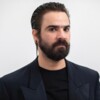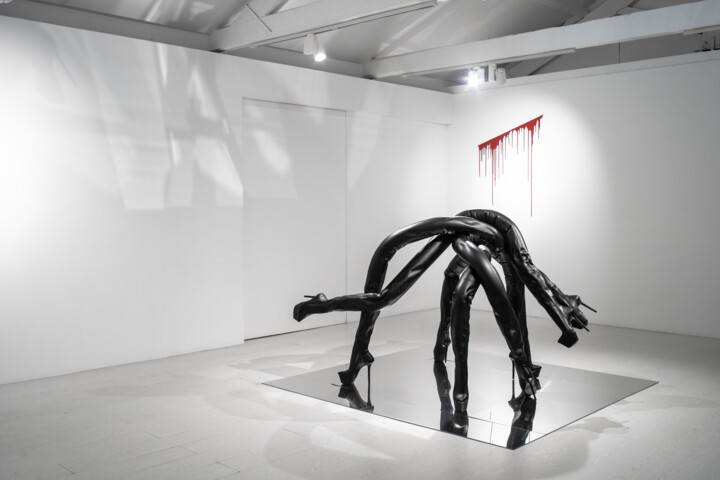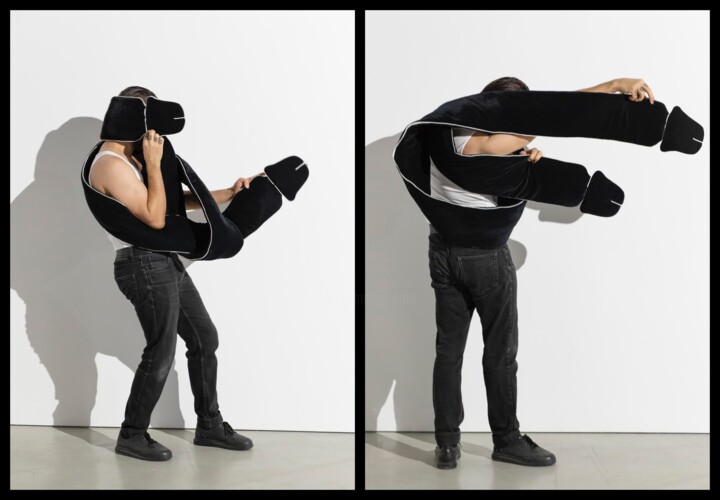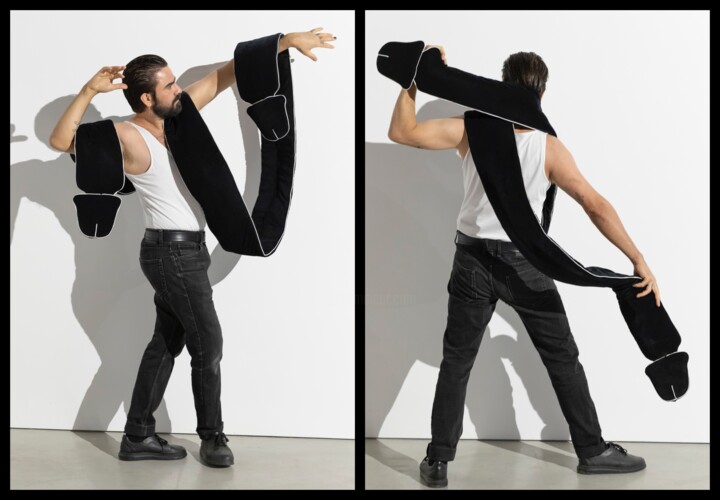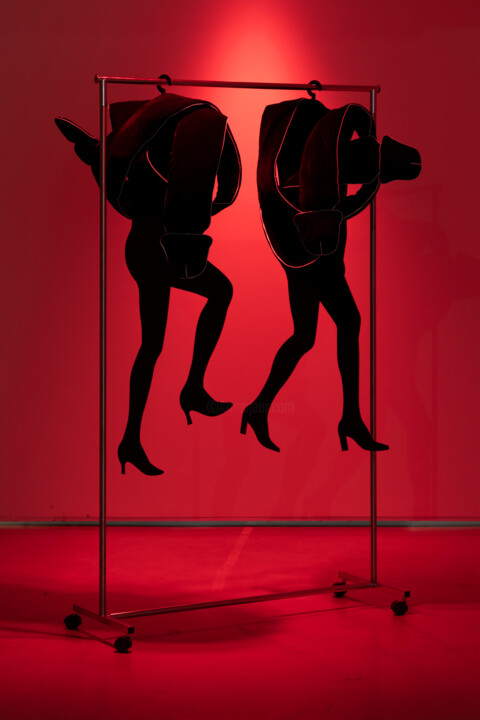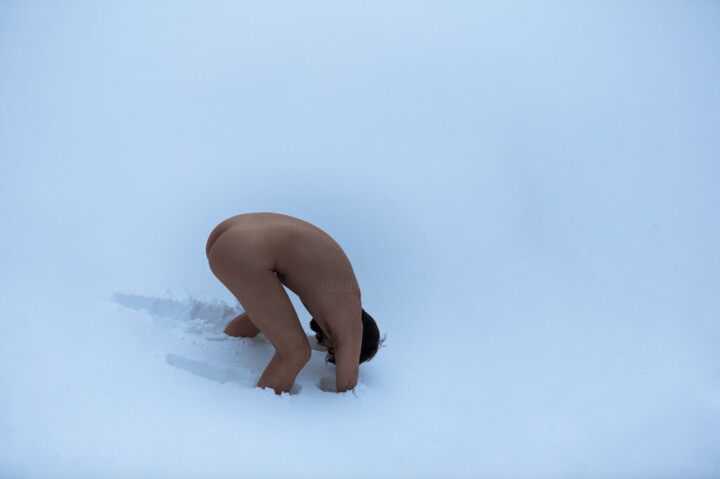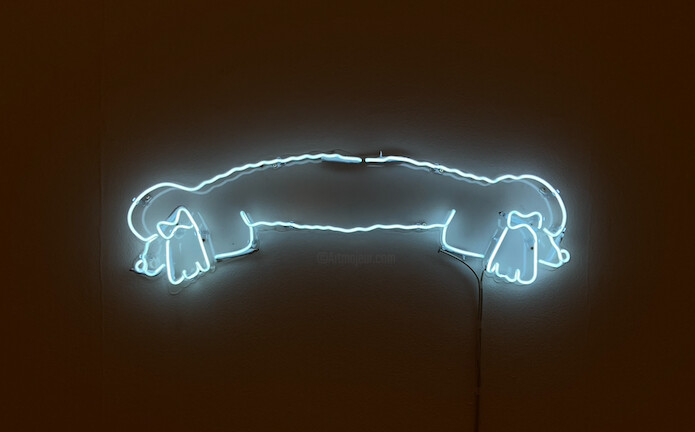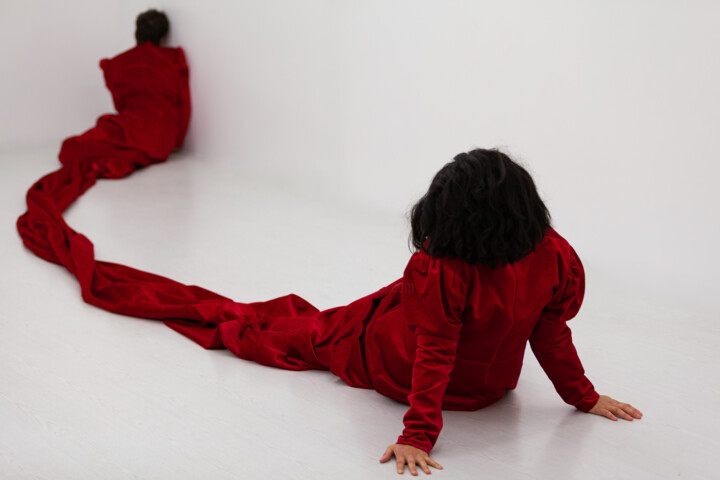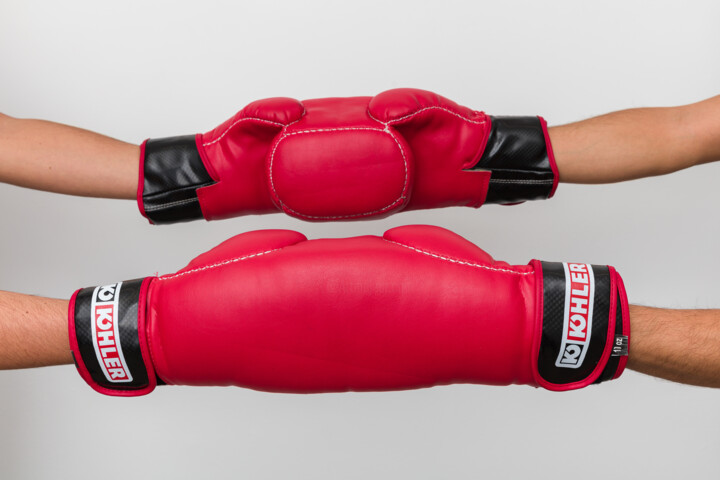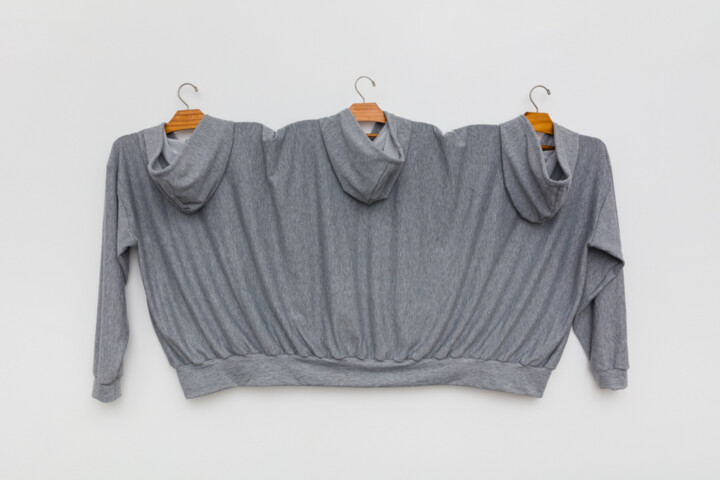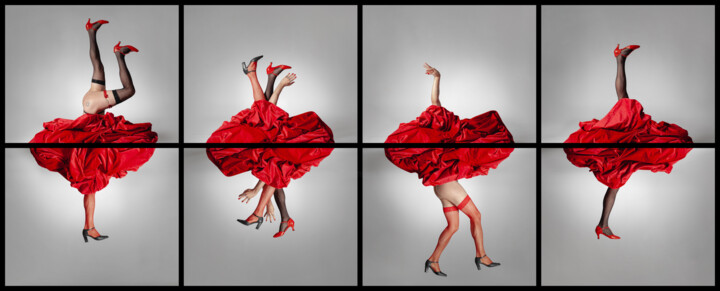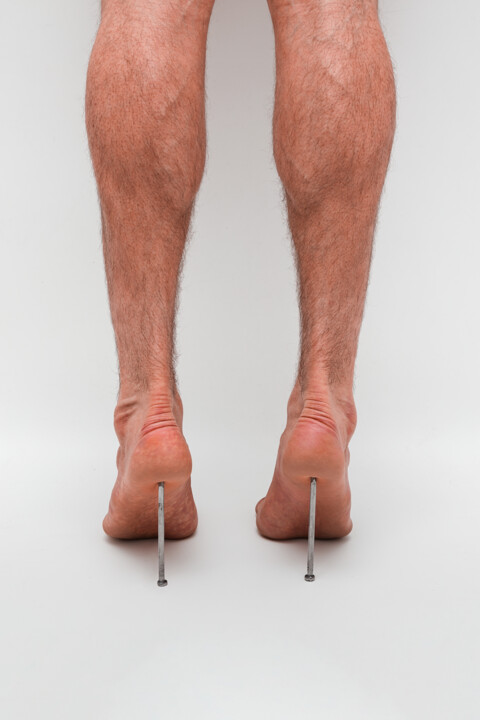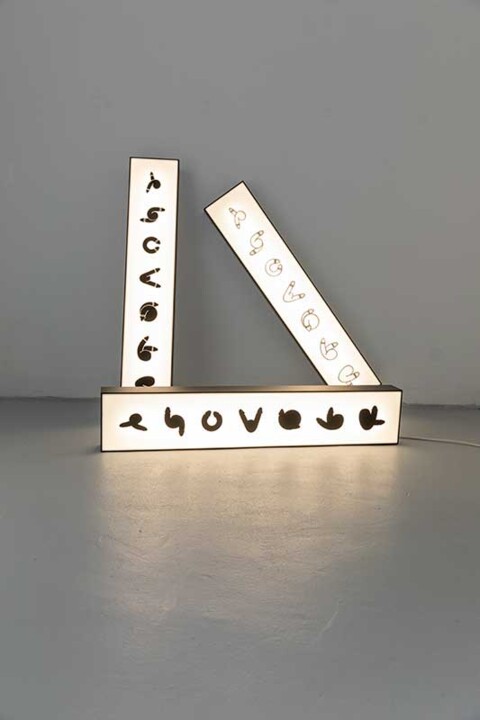What inspired you to create art and become an artist? (events, feelings, experiences...)
As a child, I received very significant influences from the family environment. My mother is a Physical Education teacher, so the focus on everything related to the body in my artistic practice came from her without a doubt. She had a gym called Corpus at the end of the 80s and beginning of the 90s and I saw closely all the functioning of the environment focused on physical activities and paid attention to everything in that context. My mother created a dance group linked to the gym and my two sisters also danced in this collective, which participated in festivals and other events in the area. As a spectator, I always followed everything and, as a son and younger brother, I was always with the women of the house watching some rehearsals, following the processes from the costume designs on papers, fabric tests, to the choice of music, in short, I was somehow present at all stages: from the sketches of the sketches to the moment of presentation of the conceived choreography. And all of that certainly influenced me a lot. And, of course, at the turn of the 1980s to the 1990s, there was no understanding of more inclusive policies in that context, so the bodies that passed there were always the hegemonic ones and, thus, I, who would love to be able to dance too, could not attend the venue. My mother was the one who did everything and I was always watching and admiring. Today, I realize that I compose a wilder version of these experiences. I propose bodies that take up (with a critical view) that aesthetic based on a Jane Fonda beauty standard, but that emerge delirious, free, considered strange in our so normalizing world.
My grandfather was a lawyer, a progressive politician, a professor of history and geography, he played the violin, wrote and recited his own poems in saraus. I admired his performance, his social and artistic performance, the way he projected his voice in public and how he made pertinent remarks. Although he was a totally calm person who was almost always silent, he never had to ask for attention when he started speaking, because people were immediately interested in his always very ethical ideas. And I loved listening to my grandfather; he was extremely erudite and had an interest in a wide range of subjects, and the day I verbalized to him that I wanted to do theater, he immediately encouraged me to join some local group and even pointed out some performing arts colleges.
What is your artistic background, the techniques and themes you have experimented so far?
I have always had multiple interests and, when I was only 11 years old, I started doing amateur theater in Catanduva-SP. I had a lot of interest in acting, staging, costuming, lighting, scenery, backstage, sound design, among other things. I was not even twenty years old and had already worked as an actor, lighting and set designer in several local productions. In 2003, I decided to go to college in Performing Arts and, then, I entered the degree in Theater Direction at UFRJ in Rio de Janeiro and, at the same time, I fulfilled disciplines of the Costume course, for which I asked for re-entry as soon as I finished Theater Direction. Gradually, I realized my interest was very transdisciplinary. I took free courses and internships at the same time. I did scientific initiation at the Museum of Life at Fiocruz in the area of interpretation, costume internship at a second group samba school and still found time to do workshops at SESC Copacabana, in higher education institutions in various areas, even aerial acrobatics at Intrépida Trupe. I used to work with props for Miguel Falabella and Cláudio Tovar in a musical that ran for a year at Teatro Carlos Gomes in Rio de Janeiro, where I always readjusted the costume and scenery props.
In 2008, I was part of the directing team of a show directed by Antonio Abujamra at Funarte in São Paulo. There, a fascination for dramaturgy also emerged. Then, almost ready to join the Dramaturgy Circle of Antunes Filho's Theater Research Center, I chose to do a master's degree in Art Theory and Criticism at the Faculty of Fine Arts in the city of Porto in Portugal and left Brazil, but without ever losing the link with the country.
I was already interested in the visual arts and, when I started my master's research, consisting of such a theoretical course and not having much institutional support to present my authorial creations in Portugal, I found in the urban space a very effective environment to experiment with some performance actions, which were always documented. I emphasize here that I had been practicing performance since 2003, but it was only in 2006 that I carried out the first action with awareness of what this artistic genre was and, only in 2008, did I start to have performance as my main means of expression.
And concomitantly with my PhD in Theatre and Performance Studies at the University of Coimbra - started in 2010 - Hilda de Paulo and I decided to have a journal specialized in performance that would not exclude texts that did not fit into an orthodox academic format and thus Performatus was born in 2012. We wanted a magazine that also encompassed the freer writings on artistic practice and, through the magazine, we started our private collection of artworks and our first steps in curating and organizing events.
From so many interests that could be dispersed, I finally assimilated how performance is the means of joining my interest in the performing and visual arts as well, and also in other areas of human knowledge. So, I joined the University of Minho in research groups and also in a post-doctorate. Today I am a professor at this university and, fortunately, I teach subjects that allow the confluence of several areas.
What are the 3 aspects that differentiate you from other artists, making your work unique?
My creations have sensuality, sensoriality and eroticism always completely committed as an ethical-political way of making art, so they are always undeniably political discourses combined with aesthetic exercises.
Where does your inspiration come from?
Constantly, I live under the full exercise of listening to the environment in which I inhabit to then realize how a body is a provisional state of a complex collection of information of the present in which it is inserted. I can thus say that everything around me is inspiration for me since the body, identity and its subjectivations are central subjects of my practice that is inevitably autobiographical. I emphasize that the autobiographical aspect always ends up appearing in my creations. Even because I have performance as an extremely relevant means of expression in my practice, this ends up being underlined, because performance is a genre in which inevitably the artist's self is often exposed.
What is your artistic approach? What visions, sensations or feelings do you want to evoke in the viewer?
I relate different experiences that cause constant changes in me and these narratives of mine (from my experiences) can be useful to other people or not. But what interests me in art is to produce knowledge from the assimilations I make about the world. And to affect directly or indirectly those who access my work.
There is an idea echoing in me that when we notice that a certain body has been altered, it means that everything around has already been transformed, because the body is a powerful indicator of the changes underway in a society. The body is a revealer of contexts. So, obviously my conceptions in art (through videos, performances, conceptual and performative induments and adornments, which are activated by means of instructions or not) are responses, are comments on everything that is around me and that affects me in various ways within this Western culture in a hallucinatingly hyper-industrialized era.
Whether in Brazil or Portugal or in any other country I have always worked (even in the most distant places like New Zealand and Iceland), I live in an undeniably colonialist and cisheteronormative structure (however advanced a society may be considered). The phallus and the logos still occupy a place of privilege in most of the world (I say most of it already being very optimistic) and this dominant structure still subalternates our desire, denying differences and structuring bodies according to aesthetic and behavioral standards ... As if we were coming out of the same factory and repeating patterns that are dictated by completely oppressive regimes.
And so, reflecting on bodies and different singularities, I create subversions to destabilize dominant ideas. And these subversions can be insolent or they can create completely playful harmonies.
How is the process of creating your works? Spontaneous or with a long preparatory process (technical, inspiration in art classics or others)?
Generally my process is very intuitive. And when an image begins to occupy my imagination, I begin to reflect on that image and, thus, I realize whether it is worth materializing the idea or not. If there is a method that I practice frequently, I can say that it is critical writing, because before materializing an idea that occurs to me, I make notes as if I were writing an art review of a work that is not mine and, thus, I can evaluate the idea in a more distanced way.
Do you use any specific working techniques? If so, can you explain them?
I'm not really a technique artist, because I have very varied interests. I have a background in theater and have been studying performance art for a long time, and although performativity is very present in my practice, I experiment with languages over which I do not have much mastery of technique. My drawings are very simple, so I started designing them for acrylic cutouts, for neon shapes, for textile configurations, that is, I present my drawings on surfaces other than just paper. The sculpture I create is crossed by clothing, by the kineticism so characteristic of the performing arts, and it never happens in a traditional way.
Are there any innovative aspects to your work? Can you tell us which ones?
I can't say if they are innovative aspects, but I can assure you that they are coherent within my trajectory. There is something very particular that I see in some of my creations, more specifically in induments used in performative situations that also have the autonomy to be displayed as objects and sculptures independently of an associated body. Another aspect that can differentiate me from a more conventional drawing practice is that my traces are transposed to cutouts on rigid and shiny surfaces (acrylic, neon, etc.) and often have kineticism with the aid of motors.
Do you have a format or medium that you feel most comfortable with, if so, why?
Performance is my main medium of artistic expression. I have been in the performing arts for almost 30 years, so this is a safer medium for me because I have a good grasp of the techniques and concepts related to live art.
Where do you produce your work? At home, in a shared workshop or in your own workshop? And in this space, how do you organize your creative work?
I produce part at home, part in my own studio and, almost always, in the context of artistic residencies or creative processes in institutions with defined deadlines. Both at home and in the studio, I like to organize everything by color and sectorize the items as if I were in a department store, because I need to control everything more easily and that way, having the space obsessively arranged, I know exactly where each item is.
Does your work take you traveling to meet new collectors, to fairs or exhibitions? If so, what does that bring to you?
This is something I love about my work. My practice has taken me to many places in the world, allowing me to meet professionals and people linked to the art circuit, but equally relevant was being able to have access to other cultures. It is interesting that the more I travel with my work, the more I understand that there are countless artistic circuits and this makes me always live as if I were discovering new things, as if there were always varied paths ahead.
How do you imagine the evolution of your work and your career as an artist in the future?
I find it difficult to answer thinking about a very distant future, but projecting my current unfulfilled desires, I see my practice moving towards larger scales, more sculptural, more installation, interactive and sound.
What is the theme, style or technique of your latest artistic production?
My latest artistic production was a return to the black box, staging a show called "Amalgam". This return to the theater environment is being exquisite, because I already do it with the eye of both a scenic artist and a visual artist, and thus I feel totally free to create hybrid propositions not restricted to categorizing commitments.
The work came from an attempt to elaborate an aesthetic solution capable of harmonizing twelve distinct singularities in a coexistence that could be an analogy about living in a democracy, considering dissimilar cultural repertoires and desires. Creation is affirmed as an emancipatory encounter in which the concept of gender cannot be restricted to the demands of the cisheteronorm that compulsorily imposes a limited male/female pair. In a movement of negation of universalizing categories, I created a tangle of costumes and accessories with bodies and thus many unstable identities are erected, revealing volatile subjects as performative constructs, sustaining gender identity as a sequence of acts.
Can you tell us about your most important exhibition experience?
I could list many experiences, but I think that my participation in BienalSur - Bienal Internacional de Arte Contemporáneo del Sur 2019 was extremely important for me, where I exhibited my work "Estar a Par" (2017) in a room where there were only two pieces: mine and the iconic work "Metamorphosis" (1976) by Michelangelo Pistoletto.
If you could create a famous work in art history, which one would you choose? And why?
"Tunnel" (1973) by Lygia Clark is a piece that fascinates me. From something very simple, something aesthetically bold is boasted. It is a simple 50-meter-long tube of elastic fabric that the audience can enter and walk through. The forms are beautiful and unrepeatable, because they are always conditioned to each specific experience. And what I find most dazzling is the ritualistic aspect of the work, because undeniably whoever goes through the tunnel does not come out the same way he went in, that is, there is a transformative efficacy in this work.
If you could invite a famous artist (living or dead) to dinner, who would it be? How would you suggest they spend the evening?
I would love to meet Márcia X. If I were with her, I would propose an informal dinner to prepare us for a mind-blowing night at Madame Satã in São Paulo.

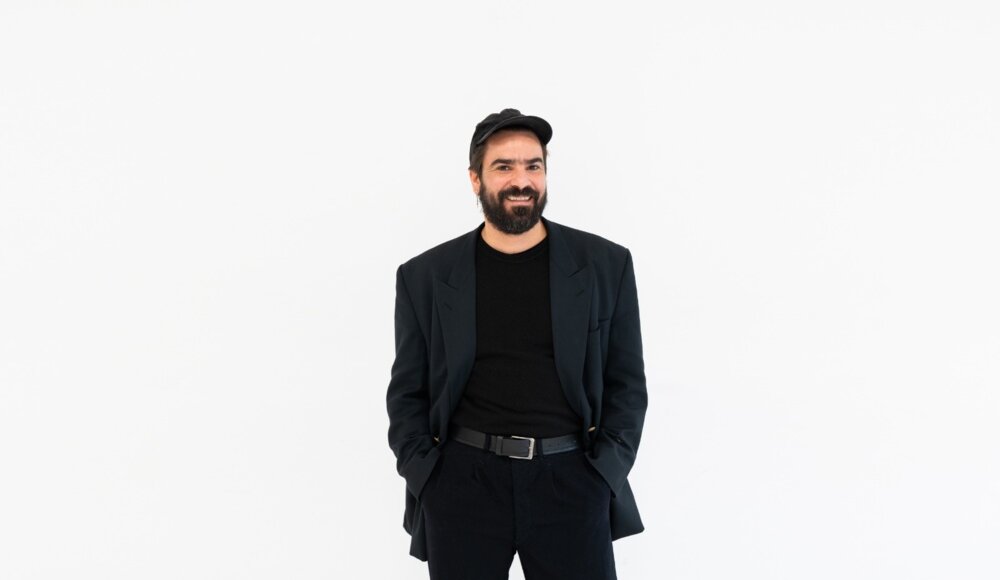






 Olimpia Gaia Martinelli
Olimpia Gaia Martinelli
